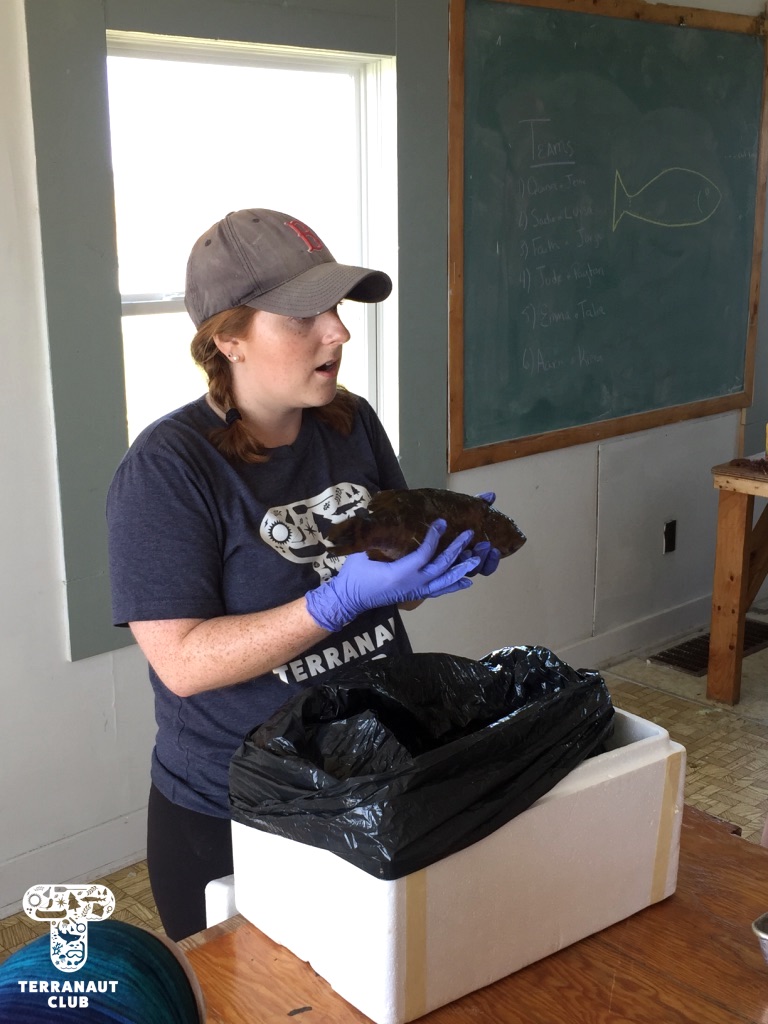⛺️🌲🍄🌞🌊
For our second annual series of Wildlife Conservation programs at Bon Portage Island’s Evelyn and Morrill Richardson Field Station in Biology, we welcomed back most of the participants that joined us in 2018. This year’s Intermediate Wildlife Conservation Program had our girls taking a deeper look at the ecology of the Island, engaging in both new activities and expanded activities from 2018.
Our first evening on the Island, we worked in teams to learn about local, national, and international non-profit wildlife conservation groups. Girls learned about an organization and presented it to our group, after which each participant was given $10 to donate to the non-profit of their choice. We developed this activity to show participants the kind of work that’s already taking place around their communities and the world, and the importance of supporting these initiatives. We were thrilled to see the results, with 5 participants choosing to make their donation to a local organization, Coastal Action Foundation, 1 participant selecting the Nature Conservancy of Canada, 2 participants donating to the Black Mambas Anti-Poaching Unit in South Africa, and 4 participants donating to the Jane Goodall Institute of Canada.
On day 2, our girls got to work in teams to identify the Island’s mysterious washed-up whale bones (later identified as a Humpback whale), do a dissection of invasive small-mouth bass caught in the Lunenburg area to see what the fish had been eating, and go grubbing for Leach’s storm petrels with Instructor Danielle. We were fortunate to find 2 adult petrels that all of our participants got to see, and it gave them a great refresher before assisting Island Biologist Rielle (from Acadia University) with her Leach’s storm petrel research the next day. During this research on day 3, our participants got to watch Rielle, with assistants Safyah and Nina, grub for petrels in designated nests. “Grubbing” involves reaching your arm down a nest in the ground to find and gently remove the adult bird, egg, or chick, for research purposes. Rielle was grubbing these specific nests to try and find the birds that they had attached GPS tags to about 3 weeks earlier. These tags track foraging trips (which can be several hundreds of kilometres!), but the GPS data collected has to be physically downloaded from the tag, meaning we don’t learn anything until the birds are found again and the tags removed. After finding 3 of the 8 birds they were looking for and removing their tags, Rielle and assistants also collected a sample of their blood and feathers. The blood sample will be used to learn about how much mercury the birds are getting from their diet, and the feather sample if they acquired it overwinter. All of these activities we conducted under special scientific research licenses and permits, and the petrels were safely released back into their nests after sampling.
That afternoon, our girls also worked in teams to build BRUVs, or baited remote underwater video systems, to evaluate the Island’s biodiversity. Girls had to use engineering and teamwork skills to build their BRUVs, as well as consider the behaviour of the animals that they were trying to attract. One of our teams built a structure to place into the salt-water pond (except the pond wasn’t deep enough – lesson learned!), and our other team built one to set in the meadow and attract the Island’s deer. They baited the structure with apples, celery, tomatoes, and carrots, and we left the structure for the evening to record any passers-by. While our girls were lucky to see a group of deer investigating the structure when they returned to pick it up, sadly our GoPro’s batteries had died before then. We didn’t see much on the video footage the next day, but we did learn that deer don’t like tomatoes! Our participants also got to witness new research starting on the Island, which looks at the Island’s vole population to see if they’re predating on (eating) storm petrel eggs or chicks. To study this, Rielle set out small traps around our cabins, and found 1 vole that she collected a fur and fecal sample from.
That night, we enjoyed a gorgeous sunset as girls took turns jumping into the frigid water. We closed out our program with a bonfire, and soaked up our last evening of life at a biological research station on a remote island. We were sad to leave the next morning, but so happy to have spent 3 days and nights exploring wildlife conservation and scientific research in an all-female environment.
Thank you to our fantastic group of participants (new and returning), and to the Island’s Biologists Rielle Hoeg, Safyah Bryan and Nina Nesbitt for hosting us and letting us learn from your work. Thanks also go to Phil Taylor, Acadia University, and the Department of Natural Resources for supporting our program, and to CBCL Limited for generously sponsoring this unforgettable experience.
🐦🦋🦌🐞🐚
This program will be offered next in July of 2020.

Photo Gallery: Best Of














































